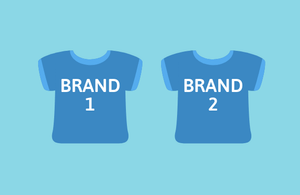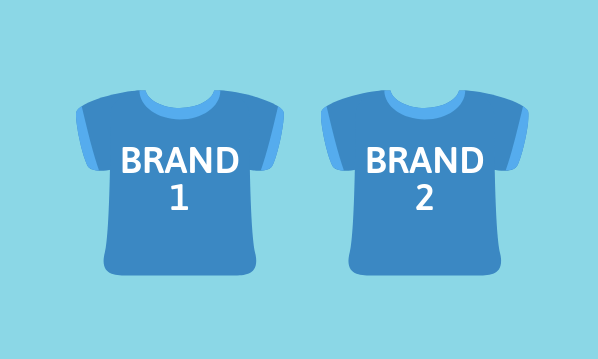
SEO isn’t just about directly selling products.
The objective of brand SEO is to create a network of STUFF that supports a customer’s decision-making process.
Customers searching for your brand should find a whole lot of places in which your ethos, services, products and reputation are explorable.
Getting your brand name onto page one of search results is the primary aim: your website, sure, but also your social media, reviews, listings and news coverage that build a trustworthy persona. You want to FILL that first page!
Brand SEO = reassurance
Here’s a simple customer journey:
A potential customer sees your brand in the results of a generic search (like ‘plumber near me’) or on a listings site such as Yell.com and clicks through – then seeks reassurance either across the site (which requires plenty of pages and content) or elsewhere: Googling for reviews, news stories, forum discussions and social media posts.
That means your brand keywords look like this:
- [brand name] + reviews
- [brand name] + background
- [brand name] + price
Make sure those searches are served by something. Get yourself on a business listings directory and reviews platform (Yell.com offers both these features), write content about your background, work to get press coverage and monitor your brand’s online reputation.
Brand SEO in practice
1. Website quality
These are hygiene factors – the basic things you need, to make sure you have a chance of ranking well for both brand and commercial keywords.
- Easy navigation (good structure helps users and site crawlers to move around)
- Accessibility (the site is built to accessibility standards e.g. alt text for images)
- Content structure (elements such as headings are all tagged correctly)
- Speed (page load times need to be regularly tested, particularly for mobile)
- Mobile-first build (major ranking factor and expectation for visitors)
2. Content
Format:
- Customer reviews
- Video
- Copy
- Infographics
Distribution:
- PR – getting stories covered in the media
- Social – seeding out your own content
- Website – publishing news or knowledge content, featuring reviews, maintaining commercial pages
Quality:
- Well-structured for user experience
- Natural style with focus on the audience
- The length the subject requires
- Appropriate meta data that works as a powerful advert in search engine results pages (SERPs)
- Use your brand keywords where relevant
3. Links
- Third-party coverage – natural, organic, beautiful links that you’ve EARNED
- Suppliers and partners – anyone proud to work with you should be mentioning you on their site with a link to yours
4. Social
Your social platforms will rank well because they belong to huge organisations with billions of search results. That means a likely page one hit – so what a customer finds there needs to reflect your brand well.
It’s also part of the research phase: if someone gets to checkout and thinks – hold on, why is this so cheap? Is this legit? – one of the first places they’ll look is social media, to check you’ve got followers and customer interaction.
5. PPC
PPC – for SEO? Yep. Brand SEO is always a long game, so using PPC can be a super-affordable way of making sure you can be found for your brand terms while you’re making your way up the SERPs organically. All those clicks mean people on your site, hopefully enjoying your content – improving your natural ranking.
When I say brand PPC is super-affordable, I mean it. Think 10% of the sort of bids you’re probably looking at for your commercial terms. [brand name] + [tractor parts] is a whole lot cheaper than [tractor parts].
Brand PPC is low volume, which is why it’s cheap, but it’s worth doing to make sure you’re visible for the people who are searching for you by name. Far worse for them to expect to find you and see nothing at all.
Those searching for you by name also have strong intent because they wanted YOUR tractor parts and not tractor parts in general. Low volume, low competition, high click-through-rate.
Brand SEO is about 360° image management
Lay an online bread crumb trail for searchers figuring out if you’re at the end of their buying journey.
Own that page one.






